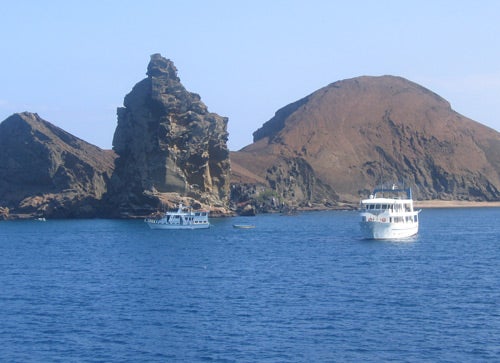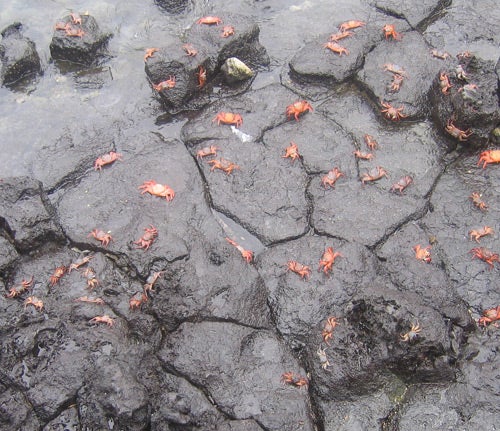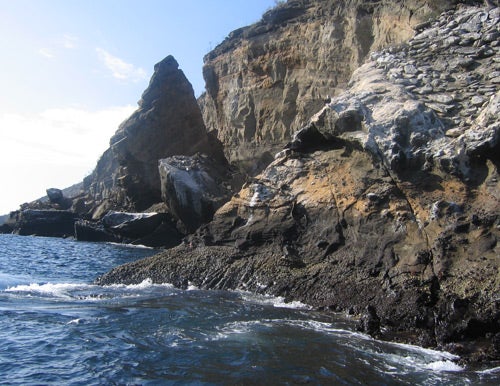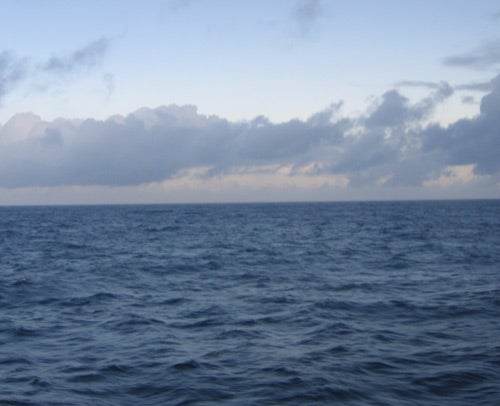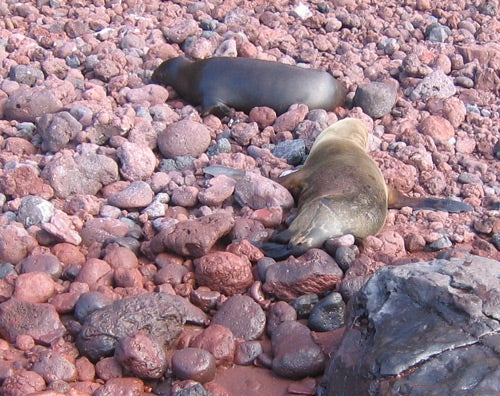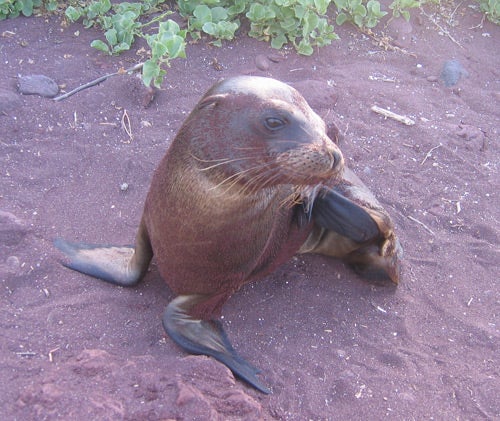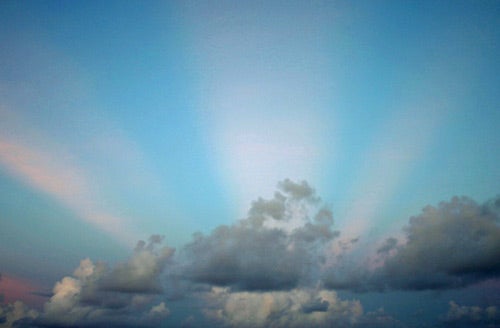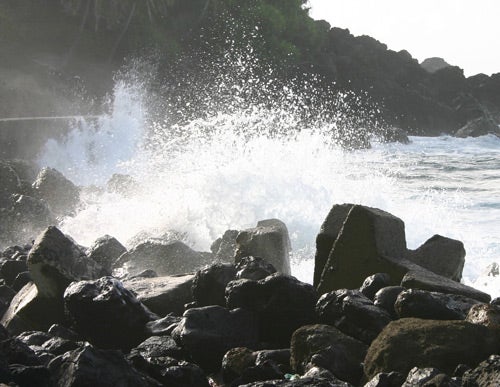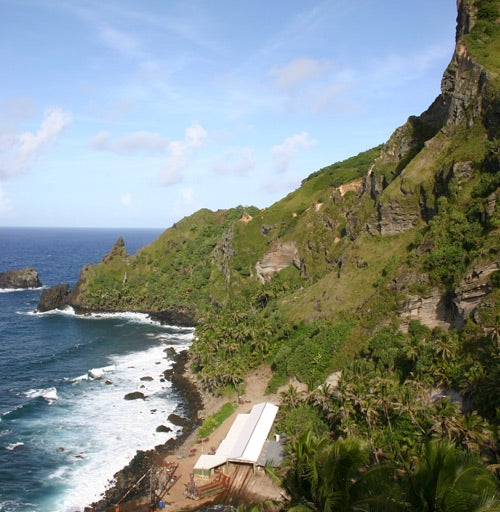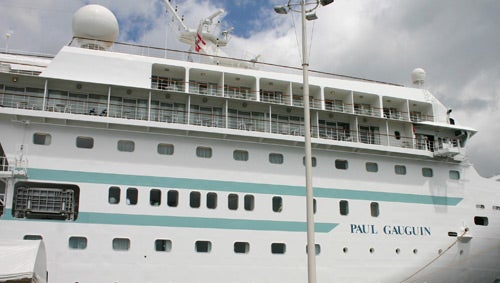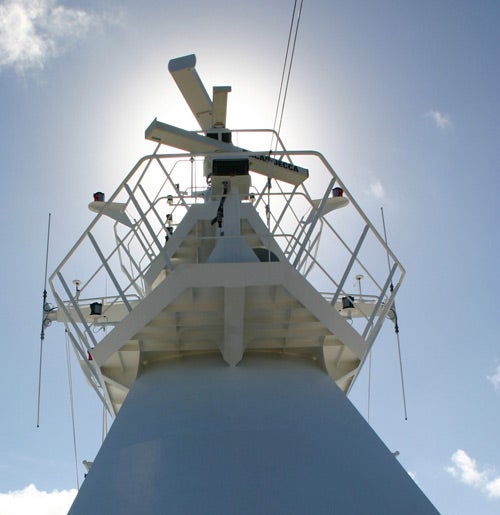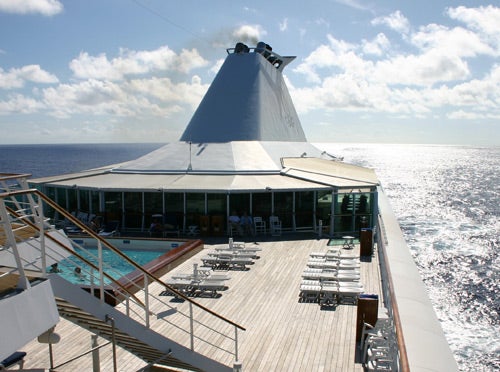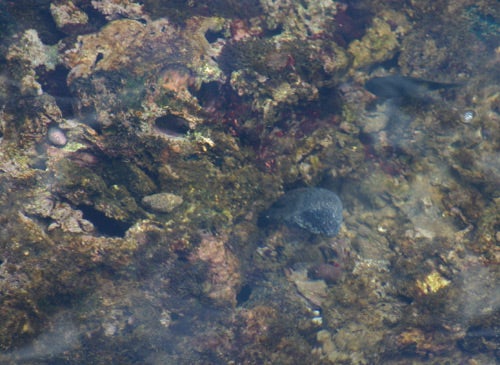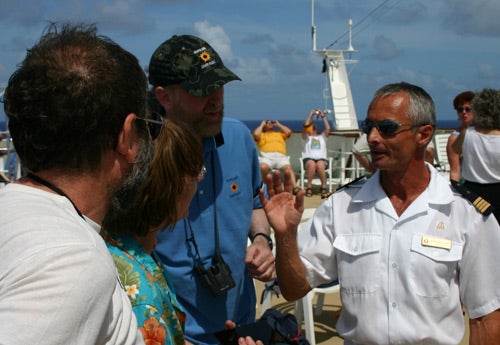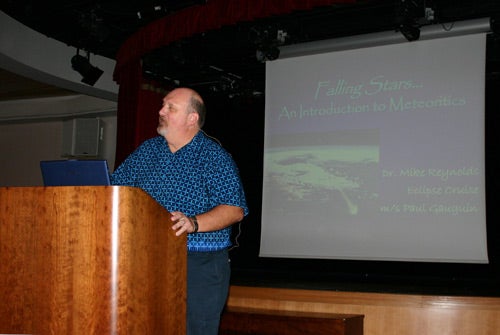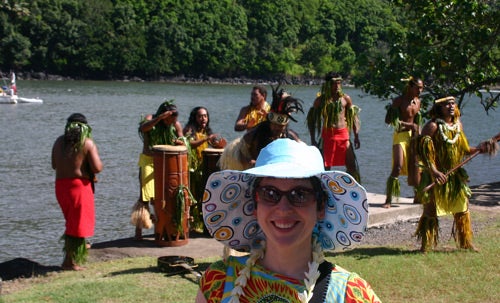In April 2005, the Moon covered the Sun for about half a minute, producing one of nature’s great spectacles, a total solar eclipse. Astronomy‘s editor, David J. Eicher and Michael Bakich headed up two ocean cruises — Dave took a group to the Galapagos Islands, and Michael led a group to Tahiti and French Polynesia. In addition to many images in the magazine, here are more images of our South Pacific adventure. And check out some spectacular eclipse images in the August 2005 “Reader gallery.”
Rocky lava outcrops
Rocky lava outcrops constitute the Galapagos Islands, where Astronomy magazine sponsored a cruise to see the total solar eclipse April 8.
Rocky lava outcrops constitute the Galapagos Islands, where Astronomy magazine sponsored a cruise to see the total solar eclipse April 8.
Sally Lighfoot crabs
Crowds of Sally Lighfoot crabs flock the volcanic basalt around Puerto Ayora, on Santa Cruz Island. Allegedly named for a dancer fond of red dresses, the bright crabs scamper around the rock quickly, hence the term “lightfoot.”
Crowds of Sally Lighfoot crabs flock the volcanic basalt around Puerto Ayora, on Santa Cruz Island. Allegedly named for a dancer fond of red dresses, the bright crabs scamper around the rock quickly, hence the term “lightfoot.”
Rough lava rocks
Rough lava rocks meet the sea along the coasts of the Galapagos. Astronomy‘s explorers piled into rubber dinghies to explore the coastline and see animals and birds.
Rough lava rocks meet the sea along the coasts of the Galapagos. Astronomy‘s explorers piled into rubber dinghies to explore the coastline and see animals and birds.
As totality approached
As totality approached, the sea darkened. The Moon’s shadow rushed on quickly, and the sky cleared in perfect time for us to see the Sun’s corona.
A hard life?
Sea lions sleep away part of the afternoon among the red, weathered rocks on Rabida Beach.
Sea lions sleep away part of the afternoon among the red, weathered rocks on Rabida Beach.
Sea lion
A young sea lion poses for the camera on Rabida Beach.
A young sea lion poses for the camera on Rabida Beach.
Crepuscular rays are intermittent light and dark bands that fan out across the sky. The dark areas are shadows formed by clouds nearer the Sun than the observer. Passengers enjoyed a wide spectacle of atmospheric phenomena during the cruise, especially around sunrises and sunsets.
Astronomy: Michael E. Bakich
Crepuscular rays
Crepuscular rays are intermittent light and dark bands that fan out across the sky. The dark areas are shadows formed by clouds nearer the Sun than the observer. Passengers enjoyed a wide spectacle of atmospheric phenomena during the cruise, especially around sunrises and sunsets.
Crepuscular rays are intermittent light and dark bands that fan out across the sky. The dark areas are shadows formed by clouds nearer the Sun than the observer. Passengers enjoyed a wide spectacle of atmospheric phenomena during the cruise, especially around sunrises and sunsets.
Pitcairn Island
The ride to Pitcairn Island is fraught with danger because of the choppy sea and craggy rocks near the shore. It’s such a rare opportunity, however, that almost everyone wanted to go. Here, islanders load cruise passengers into their “long boat.”
The ride to Pitcairn Island is fraught with danger because of the choppy sea and craggy rocks near the shore. It’s such a rare opportunity, however, that almost everyone wanted to go. Here, islanders load cruise passengers into their “long boat.”
Pitcairn Island
The descendents of the HMS Bounty now live on Pitcairn Island, a lush but nearly unapproachable island surrounded by craggy rocks and beaten by harsh waves. Only one small cove allows access, and skilled islanders have to navigate it with care.
The descendents of the HMS Bounty now live on Pitcairn Island, a lush but nearly unapproachable island surrounded by craggy rocks and beaten by harsh waves. Only one small cove allows access, and skilled islanders have to navigate it with care.
Paul Gaugin
Like a floating hotel, the M/S Paul Gauguin awaits 320 passengers intent on seeing a total solar eclipse at sea.
Like a floating hotel, the M/S Paul Gauguin awaits 320 passengers intent on seeing a total solar eclipse at sea.
Head for the Sun
Head for the Sun and hope the sky clears. On eclipse day, many hopeful observers worried about the weather.
Deck space was valuable, and the ship had more of it (percentage-wise) than any other ship in the South Pacific. The pool sits to the left of center.
Moray eel
That’s amore? No, that’s a moray — eel, that is. For passengers who chose to scuba dive or snorkel, South Pacific sea life was abundant and colorful. Most fish were oblivious of the swimmers and divers who joined them, but some, like this eel, were cautious.
That’s amore? No, that’s a moray — eel, that is. For passengers who chose to scuba dive or snorkel, South Pacific sea life was abundant and colorful. Most fish were oblivious of the swimmers and divers who joined them, but some, like this eel, were cautious.
Our hero
Captain Gilles Boussard (right), chats with elated passengers after the April 8 total solar eclipse. Captain Boussard took on the mission to navigate the ship to clear skies — and succeeded.
Captain Gilles Boussard (right), chats with elated passengers after the April 8 total solar eclipse. Captain Boussard took on the mission to navigate the ship to clear skies — and succeeded.
Mike Reynolds
Mike Reynolds, veteran eclipse-chaser, astronomy professor, and meteorite expert, spoke to cruise passengers about one of his favorite subjects — meteorites. Afterward, Reynolds answered questions and passed around meteorite samples.
Mike Reynolds, veteran eclipse-chaser, astronomy professor, and meteorite expert, spoke to cruise passengers about one of his favorite subjects — meteorites. Afterward, Reynolds answered questions and passed around meteorite samples.
Our welcome to Hiva Oa was a combination of fruit drinks, flower leis, and native dancers. Traveler Holley Bakich, equipped with hat, sunglasses, and lots of water and sunblock, set out to explore the island.

